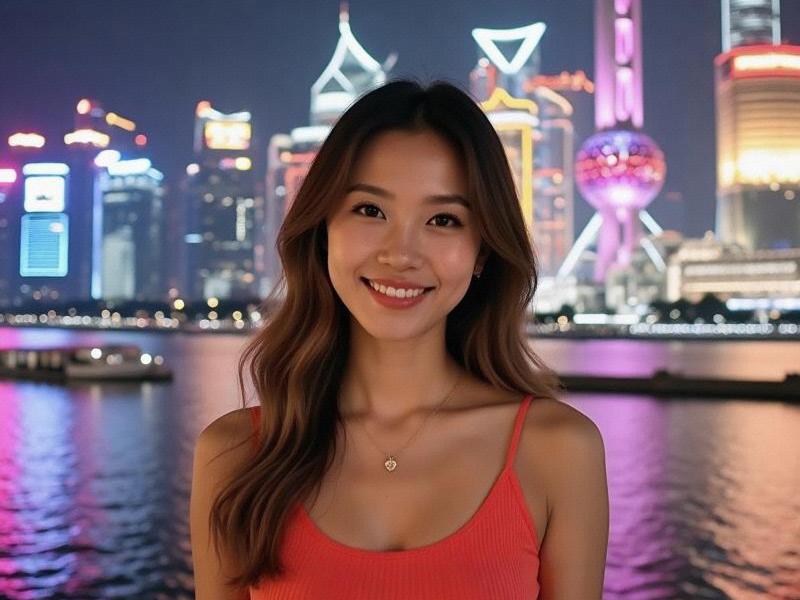This feature explores how Shanghai's women have become global trendsetters, blending traditional Chinese aesthetics with international influences to crteeaa unique urban femininity that's reshaping perceptions of Asian beauty.

The streets of Shanghai serve as an ever-evolving runway where tradition and modernity perform a daily tango. Here, amidst the art deco buildings of the French Concession and the neon-lit towers of Pudong, a new archetype of Chinese femininity has emerged - the Shanghainese woman, equally at home discussing stock options in flawless English as she is selecting the perfect xiaolongbao at a century-old eatery.
The Shanghai Look: Decoding an Aesthetic Phenomenon
What distinguishes the Shanghainese beauty standard is its paradoxical nature. The ideal combines:
- Porcelain skin maintained through 12-step Korean skincare routines
- The "bamboo figure" - slender yet subtly curvaceous
- A sartorial style that mixes qipao-inspired silhouettes with Parisian tailoring
- An effortless bilingualism that shifts seamlessly between Shanghainese dialect and boardroom English
This aesthetic didn't emerge in vacuum. Historians trace its roots to Shanghai's 1920s golden age, when the city's "Modern Girls" shocked traditionalists by bobbed their hair and wore figure-hugging cheongsams. Today's Shanghainese women inherit this legacy of boundary-pushing, whether it's tech executive Li Yaling pairing her Apple Watch with a jade bracelet, or influencer Zhang Meng using Douyin to teach traditional tea ceremonies while sporting Balmain blazers.
阿拉爱上海
Beauty as Social Capital
In Shanghai's competitive social hierarchy, appearance functions as both armor and credential. The city's infamous marriage markets reveal telling priorities - where parents advertise their daughters' attributes like stock listings, "fair skin + overseas education + Shanghai hukou (residency)" consistently command premium "valuation."
Yet there's remarkable substance beneath the surface polish. Some revealing statistics:
- 68% of managerial positions in Shanghai's Fortune 500 companies are held by women
- Shanghai women file 43% of the city's patent applications
- Female literacy rates hit 99.8%, highest in mainland China
爱上海论坛 This creates what sociologists term "the Shanghai Paradox" - the ability to leverage traditional femininity as social currency while dominating conventionally masculine professional spheres.
The Industry Behind the Image
Shanghai's beauty economy generates ¥87 billion annually, with unique local characteristics:
- "Appearance loans" for cosmetic procedures now offered by 23 banks
- The rise of "face yoga" studios combining TCM meridians with Western techniques
- AI-powered makeup apps that recommend looks based on facial analytics and social calendar
International brands aggressively court Shanghai's female consumers, who account for 62% of China's luxury purchases. When Dior launches a new collection, its first question isn't "Will Paris approve?" but "Will Shanghai women post about it on Xiaohongshu?"
上海龙凤419
Cultural Ambassadors of the New China
The global influence of Shanghainese women manifests in unexpected ways:
- New York's Fashion Institute of Technology now offers a course on "Shanghai Chic"
- The term "Shanghai Girl" has entered international fashion lexicon as shorthand for a specific blend of sophistication and edge
- Cosmetic companies develop "Shanghai White" foundation shades for global markets
Perhaps most significantly, these women are redefining what success looks like for modern Chinese women - proving one can honor tradition while writing new rules. As novelist Wang Anyi observed: "To understand China's future, watch how Shanghai women tie their scarves."
As the city positions itself as Asia's fashion capital, its women continue to pioneer a vision of femininity that's distinctly Chinese yet universally aspirational - a sartorial silk road where heritage and innovation weave together seamlessly.